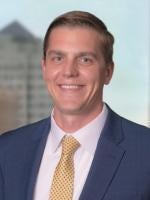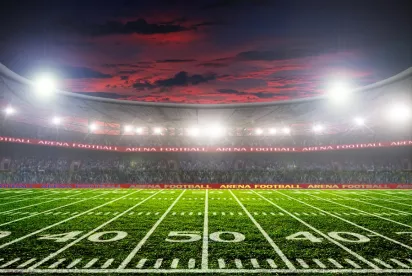Over the past year, professional football stadiums across the United States have seen an uptick in players kneeling, sitting, or remaining in the locker room during the National Anthem. Fans spectating in the stands have begun to join in. This movement is not limited to professional football, as many high schools have also experienced players, coaches, or other staff members participating in silent protests during the National Anthem. All signs indicate that the movement is only going to get bigger in the coming months.
It is imperative that school districts recognize what may or may not be done under the First Amendment in response to students, coaches, staff members, and community members engaging in silent protest during the National Anthem. This Legal Update will briefly address the First Amendment analysis for each of the subgroups to provide a framework for school districts to consider when assessing what can and cannot be done in response to silent protests during the National Anthem.
Students
It is well-established that students do not shed their First Amendment rights at the schoolhouse gate. Thus, when students engage in speech or forms of expression, school districts must be cautious as to their response.
With regard to limiting forms of student expression, the Supreme Court of the United States held in Tinker v. Des Moines Indep. Comm. Sch. Dist. that whether students are "in the cafeteria, or on the playing field . . . [they] may express [their] opinions . . . if [they] do so without 'materially and substantially interfering with the requirements of appropriate discipline in the operation of the school' and without colliding with the rights of others." 393 U.S. 503, 513 (1969). In other words, Tinker stands for the proposition that school districts may limit student expression if it materially and substantially interferes with the operations of the school. Note that actual disruption does not have to occur for the expression to be unprotected; rather, forecasted substantial and material disruption resulting from a student's expression creates sufficient basis for a school district to prohibit the student from engaging in such expression. It must also be noted that courts have held students cannot be punished with a ban from extracurricular activities for non-disruptive speech without running afoul of the First Amendment. T.V. ex rel. B.V. v. Smith-Green Comm. Sch. Corp., 807 F.Supp.2d 767, 780-81 (N.D. Ind. 2011)(citing Tinker, 393 U.S. at 513; Pinard v. Clatskanie School District 6J, 467 F.3d 755, 769 (9th Cir.2006); Doninger v. Niehoff, 642 F.3d 334 (2nd Cir.2011)).
When one applies the standard set forth in Tinker to a student's act of kneeling, sitting, or otherwise not participating in the National Anthem, it appears unlikely that school districts will be able to prohibit students from engaging in such silent protests absent extraordinary circumstances. Although students kneeling during the National Anthem may cause a minor diversion during the game itself, such distraction is likely not substantial and material disruption to the school's operations allowing for action by the school district. Absent such a result, students' choice of expressing themselves by way of silent protest must be permitted under the First Amendment. At the same time, that is not to say that school districts and their respective coaches cannot use such situations as a teaching moment, instructing students that the exercise of First Amendment rights can be perceived in various ways in the community.
Football Coaches
Likewise, employees of school districts do not shed their First Amendment right to comment on matters of public interest simply by virtue of their employment. However, employees do not enjoy unlimited First Amendment rights as a result of being public employees. Statements made by public employees pursuant to their official duties are simply not protected by the First Amendment from employer discipline. Garcetti v. Ceballos, 547 U.S. 410, 126 S.Ct 1951, 164 L.Ed.2d 689 (2006).
If a football coach were to kneel during the National Anthem before a football game, the coach would be engaging in expression while engaged in the scope of his or her job duties (i.e., coaching the football team). Further, the coach would very likely be wearing various pieces of clothing or equipment that demarcate him or her as a school district employee. A strong argument exists that the football coach was speaking as an employee, not as a citizen. In turn, this means that the football coach's expression would not enjoy First Amendment protections, and a school district could therefore prohibit the coach from engaging in such expression or discipline the coach for engaging in such expression.
This analysis applies in equal force to members of the football staff other than the head coach, including coaches deemed "volunteers" in accordance with the Fair Labor Standards Act.
Staff Members
As with coaches on the football team, expression engaged in by staff members attending a football game in the stands or otherwise is only protected if the staff member was speaking as a citizen on a matter of public concern and, in doing so, the staff member's interests outweighed those of the employer. See Connick v. Myers, 461 U.S. 138, 148, 103 S.Ct. 1684, 75 L.Ed.2d 708 (1983); Pickering v. Bd. of Educ. of Township High Sch. Dist. 205, Will Cty., 391 U.S. 563, 568, 88 S.Ct. 1731, 20 L.Ed.2d 811 (1968).
The analysis surrounding expression engaged in by staff members is highly complex due to the unique factual circumstances surrounding each staff member's presence at the game. For example, some staff members may be attending the game in the stands on their own time and at their own volition while dressed in innocuous street clothing. In such circumstances, the staff member is likely not engaged in his or her official duties while at the game, and the staff member would arguably be expressing him or herself as a citizen, not as a public employee. On the other hand, another staff member in the stands may be draped in school apparel, which indicates that he or she is an employee of the respective school district. Such a change in facts may substantially alter the analysis.
Adding to the complexity is the fact that even if a staff member is found to have been speaking as a citizen on a matter of public concern, the next question becomes whether the school district's interests in effectively providing services to the public outweigh the staff member's interests in the expression. This analysis is akin to that under Tinker, meaning a school district would have to be substantially limited in its ability to provide public services via disruption (actual or forecasted) caused by the expression. Here, unless a staff member's act of kneeling or otherwise protesting results in substantial disruption to the school's operations, a school district is going to have a difficult time limiting the employee's First Amendment rights. The factual discrepancies can be the difference between a staff member's expression being protected or unprotected under the First Amendment, and so a careful analysis is required.
Community Members
As to community members who attend an event at or sponsored by the school district, the school district has little recourse in prohibiting silent protests by members of the public. A similar analysis applies in that a school district would have to assess whether the individual is speaking on a matter of public concern and whether the school district's interests in effectively providing services to the public outweigh the community member's interests in the expression. Assuming the silent protest by a community member does not result in a substantial disruption to the school district's operations, the school district would be remiss to prohibit a community member from taking a knee, sitting, or otherwise protesting during the National Anthem.
Conclusion
First Amendment issues are highly fact-intensive, highly complex, and can prove costly if handled improperly. As such, it is imprudent to assume what is permissible in one context is permissible in another. School districts should engage in a careful analysis of the specific factual situation at play, and consider contacting legal counsel prior to prohibiting a student, staff member, football coach, or community member from engaging in what may be protected expression under the First Amendment. Likewise, school districts should contact legal counsel prior to disciplining any of the aforementioned individuals from engaging in what may be protected expression.
School districts should also be aware of the public relations aspect of reacting to silent protests during the National Anthem. This issue is extremely polarizing, and strong feelings exist on both sides of the debate. The Green Bay Packers' recent silent demonstration, which was led by Aaron Rodgers, serves as a prime example of the many ways in which such an expression can be perceived throughout the community. As such, these situations do present a teaching opportunity. As long as such a teaching moment is instructional and not threatening, school districts may wish to consider that approach.




 />i
/>i

